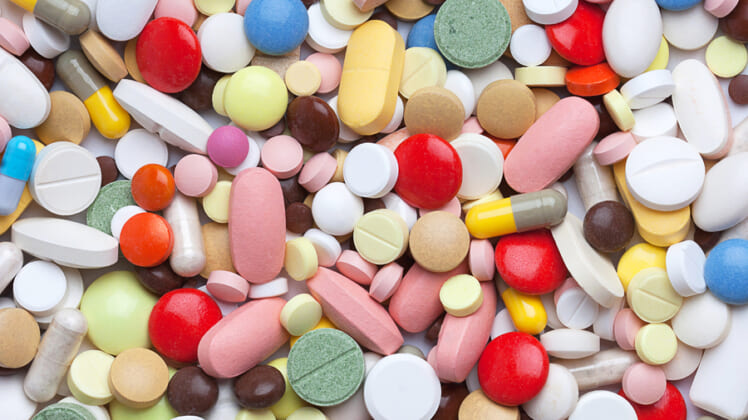
If you’ve used prescription painkillers in the last few years, you may have noticed that they’re coming with more restrictions.
That’s largely due to the opioid crisis in the United States, and thankfully experts are responding to that problem. However, abuse doesn’t limit itself to prescription medicine, and recent measures show that over-the-counter drug abuse needs some focus too.
On Tuesday, the FDA announced a new tactic the organization is taking to counter OTC drug abuse. It’s now looking to work with manufacturers to lessen misuse of the anti-diarrhea drug Imodium.
According to the National Institute on Drug Abuse (NIDA), Imodium (or loperamide) is one of the most commonly abused over-the-counter drugs in the United States. People overdosing on it may be trying to curb withdrawal symptoms from other addictions such as heroin or prescription opioids.
When taken in large amounts, loperamide may produce a mild high, making it attractive to drug addicts. However, it can have severe effects on a person’s health if it’s not used appropriately.
To combat this problem, the FDA is asking loperamide manufacturers to limit the dosage available in each package. This approach makes sense because experts recommend that a person should stop taking the drug after 2 days anyway. If symptoms persist, the user should instead go see a doctor.
In addition to this measure, companies may switch to blister packaging in which the user has to open a package for each individual dose.
These actions may help discourage users from abusing the drug and may also alert others when someone isn’t using the medicine as directed.
Americans Have a Pill Problem.
It’s no wonder that both prescription and over-the-counter drug abuse are problems in the US. Americans have access to a wide selection of drugs to ease nearly every ailment.
Have a mild headache? You can take something for it. Need more energy? You can pop a caffeine or energy drink. Want to ease period pain? Take your pick of medicine to use.
The problem with such access is that Americans often do turn to medicine for mild symptoms. And this habit can easily translate into an addiction if people aren’t careful. In some instances, it simply means a large stash of unused medicine that’s easy for young adults to access.
According to the NIDA’s 2017 Monitoring the Future Study, nearly 11 percent of high school seniors are abusing prescription drugs. At the same time, 3 percent them are misusing cough medicine. Those in 8th and 10th grade are abusing cough medicine as well—at 2 percent and over 3.5 percent respectively.
The U.S. needs to wake up to this problem and learn how to deal with over-the-counter drug abuse together.
How can you spot OTC drug abuse?
The NIDA defines over-the-counter drug abuse as taking the medicine in any other way than what is directed on the packaging. You are also misusing the medicine if you’re taking it with the intention of getting high or mixing it with other drugs to form a new concoction.
If someone you know is abusing over-the-counter medicine, you might notice:
- Excessive mood swings or personality changes
- Trouble sleeping
- Taking higher doses of a medicine than recommended
- An excessive stash of OTC medicine or using up medicine too quickly
- Periods of hyperactivity/lethargy
- Sweating/flushed skin
- Euphoria (if the drug is being used currently)
Many people abusing these medications have a history of drug abuse, making it necessary to stay watchful for these individuals. If you notice anything out of the ordinary, you should attempt to get your loved one to a doctor or professional treatment center. Be sure not to force them since this could prompt more aggressive behavior.
Commonly Abused Drugs to Watch For
While users may abuse a variety of over-the-counter drugs, there are a few that are more commonly abused. These include:
Dextromethorphan (DMX)
DMX is actually an opioid found in many cough medicines. The ingredient doesn’t act on opioid receptors, prompting its over-the-counter status. However, if a user takes enough of the drug, DMX can act as a depressant and hallucinogen.
However, along with its hallucinations, the person using it may experience paranoia, panic, aggression, anxiety or physical distortion. It can also raise blood pressure or cause stomach pain, vision changes and poor motor control. Long-term, DMX can lead to liver failure.
Abusers will often buy extra strength versions of cough medicine and may also mix the drug with a drink. In some cases, users will inject it.
Loperamide
Another OTC opioid, this drug is designed not to enter the brain. However, it can cause a mild high in large doses, causing the drug to act similar to a prescription opioid.
Mild health effects of this drug include stomach pain, constipation, eye changes or fainting. If prolonged, loperamide can cause kidney problems, an erratic heartbeat or other serious cardiac complications.
Pseudoephedrine
Another commonly abused drug is pseudoephedrine. Technically a behind-the-counter drug now, pseudoephedrine was made as a nasal decongestant to be used in cold medicines. However, many abusers have used the drug to make methamphetamine. While most states still don’t require a prescription, some states will not sell the drug to anyone under age 18.
Overall, Americans have an issue with turning to medicine to fix their problems. While they may not have intended it, the open access could lead to addiction for them or for adolescents who know where to find the extra medicine.
To combat this problem, Americans need to start taking responsibility today, whether they find help for themselves or lead someone they love to treatment. There’s only so much that companies and professionals can do.
